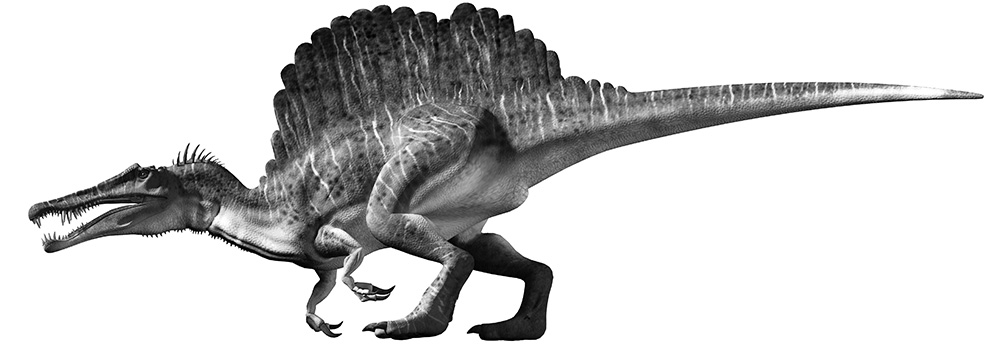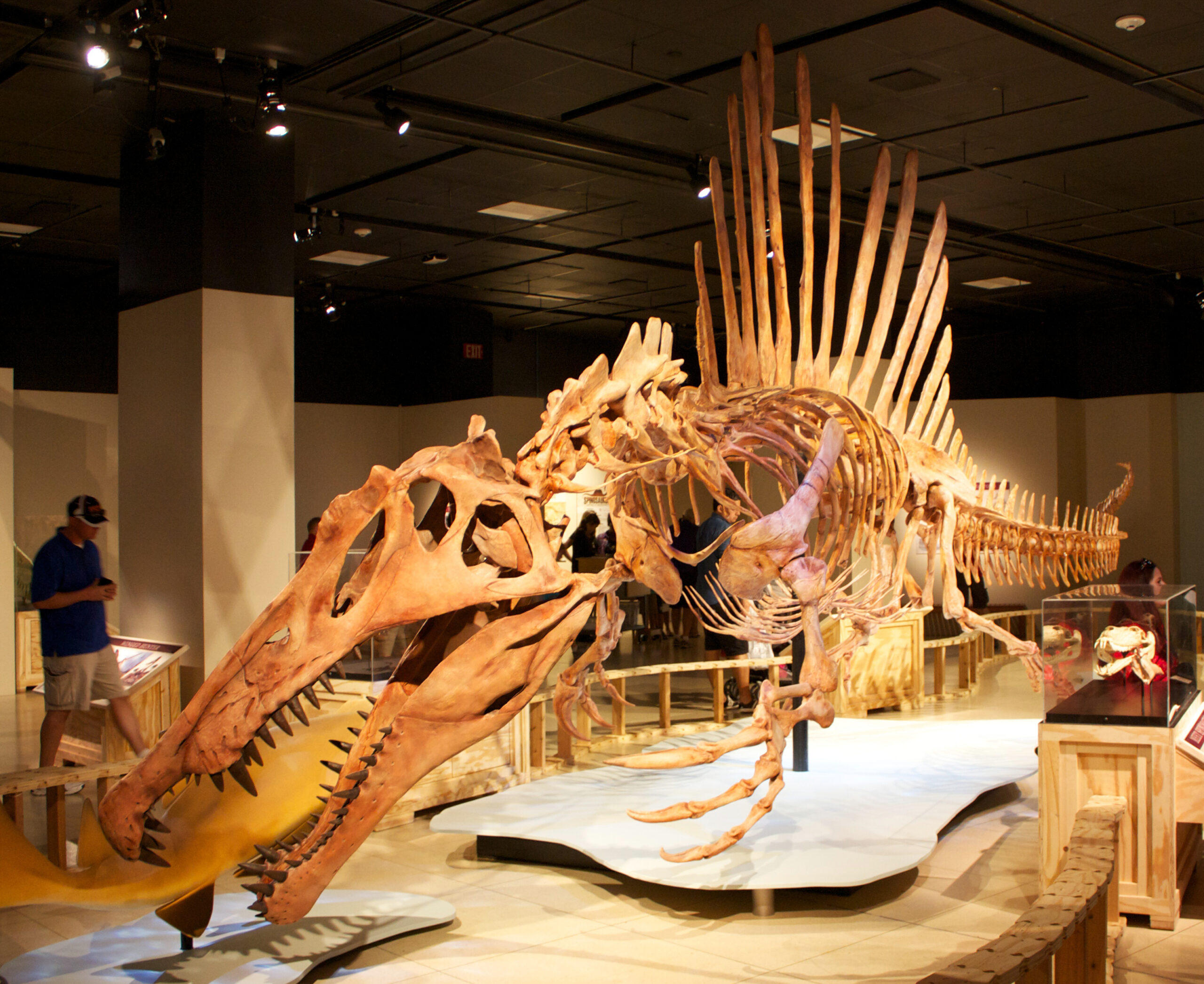
Quick facts
- Meaning “Spine lizard”
- Lived in North Africa
- Late Cretaceous – about 99 to 93.5 million years ago
- Longest known carnivorous dinosaur
- Most likely had a sail stretched over its spines
- Ate meat and large fish
- Semi-aquatic lifestyle
Spinosaurus Fact Sheet
General
Spinosaurus, or “spined reptile,” was named for its “sail back” feature, created by tall vertebral spines. The large neural spines, up to 1.8m (6 feet) long, came out of its back vertebrae, probably forming a sail-like fin that may have helped in thermoregulation, mating rituals and/or intraspecies rivalry. Spinosaurus had a relatively flexible upper spine (these vertebrae had modified ball-and-socket-joints) so it could arch its back somewhat, perhaps being able to spread the sail (like opening the ribs of a fan). Related taxa in the family Spinosauridae include Baryonyx from England, Irritator from Brazil, and Suchomimus from Niger.
Spinosaurus was bipedal (it walked on two legs). The dinosaur, which was longer and heavier than Tyrannosaurus and Giganotosaurus, is the largest known carnivorous dinosaur. It possessed a skull 1.75 metres (roughly 6 feet) long, a body length of 14–18 metres (46–59 feet), and an estimated mass of 12,000–20,000 kg (13–22 tons).

Dicovery
Spinosaurus was first discovered in 1912 from Egyptian remains and described in 1915 by Ernst Stromer. In 1944, towards the end of World War II, the vast majority of Stromer’s fossil collection (including the only known (though incomplete) skeletons of Spinosaurus and Aegyptosaurus) was destroyed when the museum in which it was held (Munich) was bombed by the Allied Royal Air Force during a raid.
Habitat and lifestyle
The dinosaur lived in the tropics near sea level in what now is North Africa during the Late Cretaceous period (99 to 93.5 million years ago). Spinosaurs are believed to be semi-aquatic creatures. Its teeth were straight and conical, instead of curved and bladelike as in other theropods. All these features are adaptations for piscivory (that is, the consumption of fish). In addition, the bones of its skeleton were more compact and denser than those of similar land-dwelling theropods, which allowed it greater control over its buoyancy underwater; this characteristic has led some researchers to argue that Spinosaurus was primarily an aquatic predator rather than a terrestrial one. Other spinosaurids have been found with partially digested fish scales and the bones of other dinosaurs in their stomach regions, and spinosaurid teeth have been found embedded in pterosaur bones.

Pop culture references
Spinosaurus was made famous by movies like Jurassic Park III were it replaced the T-rex as antagonist, Jurassic World: Camp Cretaceous, and earlier on several postage stamps from countries such as Angola, The Gambia, and Tanzania.
Quick facts
- Meaning “Spine lizard”
- Lived in North Africa
- Late Cretaceous – about 99 to 93.5 million years ago
- Longest known carnivorous dinosaur
- Most likely had a sail stretched over its spines
- Ate meat and large fish
- Semi-aquatic lifestyle

